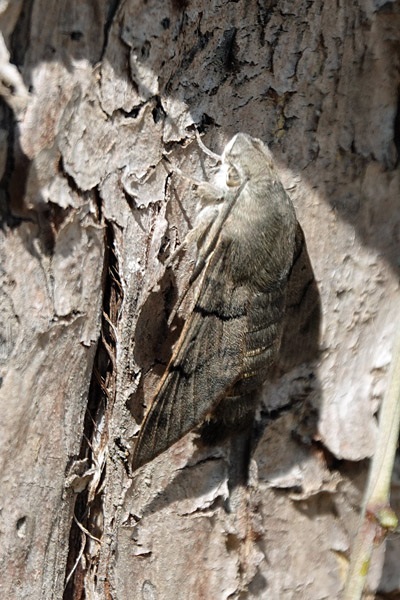Dear Reader, I give you the most amazing insect you are likely to see in your garden.
(Cue drumroll)
Ta dah!

It's a bit like that moment on Britain's Got Talent where an act walks onto stage and you so hope they are going to be good but you're prepared for it to flop badly.
So come on, little moth - what trick do you have for us?
Wait for it, wait for it...

Yes, this is the moth that can hang motionless…